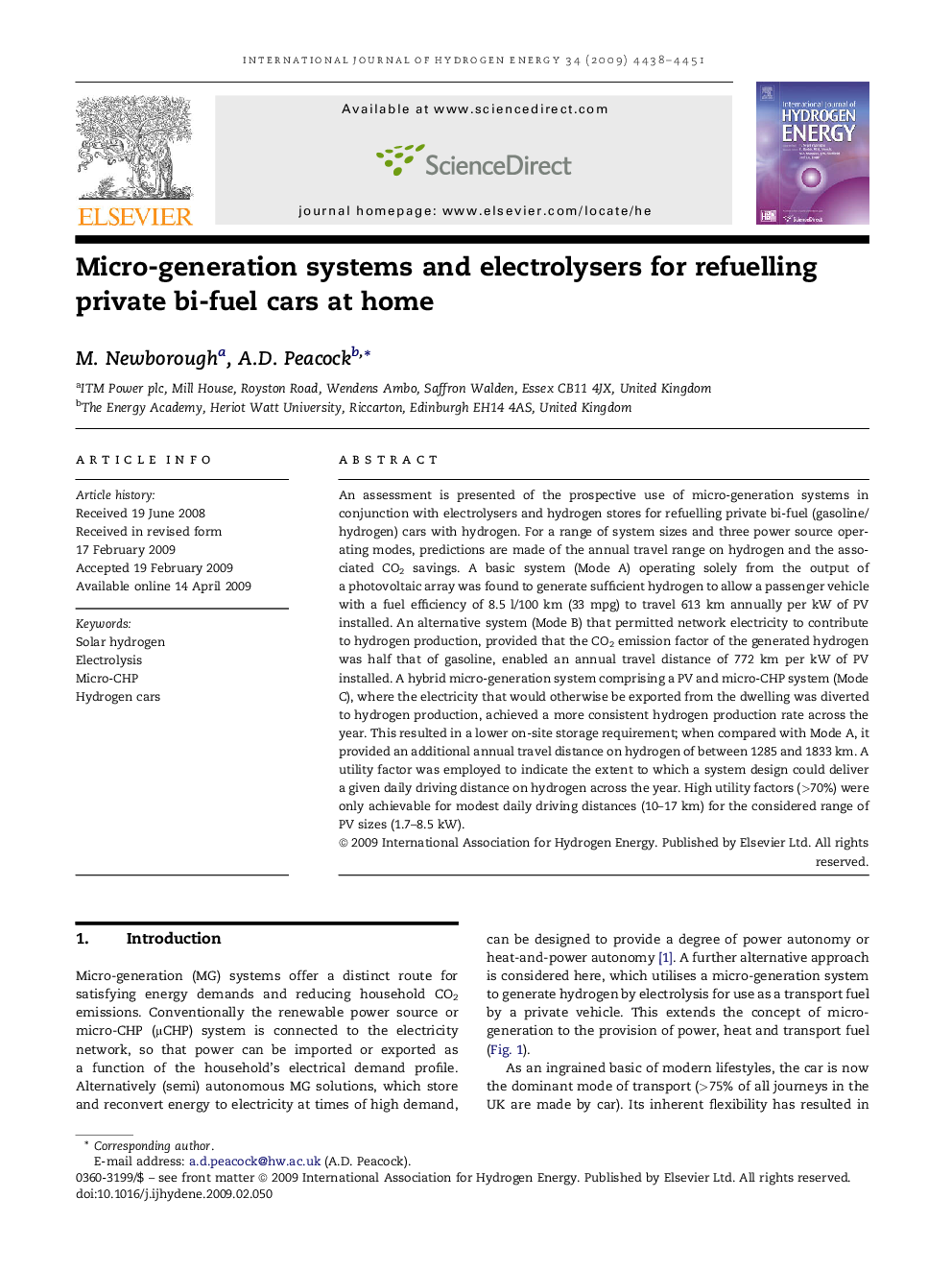| Article ID | Journal | Published Year | Pages | File Type |
|---|---|---|---|---|
| 1273853 | International Journal of Hydrogen Energy | 2009 | 14 Pages |
An assessment is presented of the prospective use of micro-generation systems in conjunction with electrolysers and hydrogen stores for refuelling private bi-fuel (gasoline/hydrogen) cars with hydrogen. For a range of system sizes and three power source operating modes, predictions are made of the annual travel range on hydrogen and the associated CO2 savings. A basic system (Mode A) operating solely from the output of a photovoltaic array was found to generate sufficient hydrogen to allow a passenger vehicle with a fuel efficiency of 8.5 l/100 km (33 mpg) to travel 613 km annually per kW of PV installed. An alternative system (Mode B) that permitted network electricity to contribute to hydrogen production, provided that the CO2 emission factor of the generated hydrogen was half that of gasoline, enabled an annual travel distance of 772 km per kW of PV installed. A hybrid micro-generation system comprising a PV and micro-CHP system (Mode C), where the electricity that would otherwise be exported from the dwelling was diverted to hydrogen production, achieved a more consistent hydrogen production rate across the year. This resulted in a lower on-site storage requirement; when compared with Mode A, it provided an additional annual travel distance on hydrogen of between 1285 and 1833 km. A utility factor was employed to indicate the extent to which a system design could deliver a given daily driving distance on hydrogen across the year. High utility factors (>70%) were only achievable for modest daily driving distances (10–17 km) for the considered range of PV sizes (1.7–8.5 kW).
